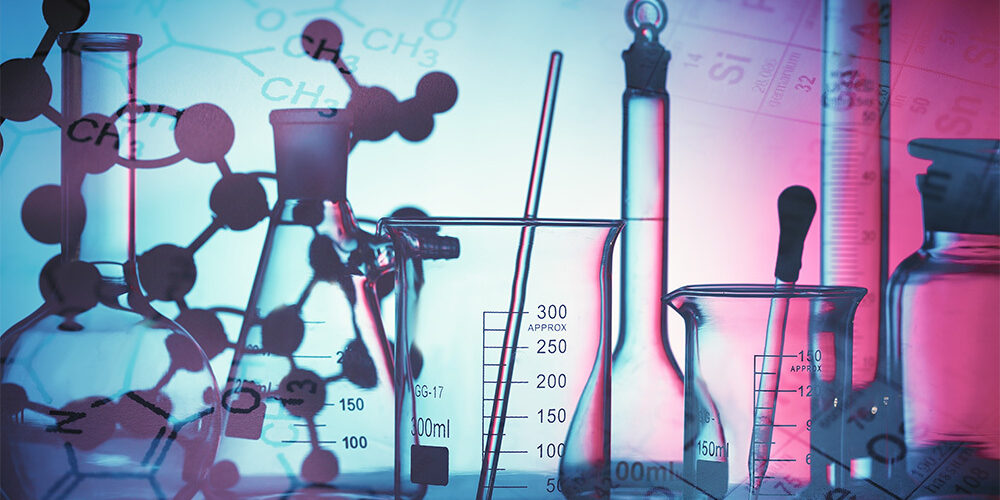Introduction
Throughout the drug discovery process, it is considered that a compound’s pharmacological effect is driven by its free, or unbound, concentration1. Unbound in vivo blood or plasma concentrations can be estimated by multiplying total levels by the fraction of the compound that is unbound in blood or plasma, respectively. Furthermore, there are a variety of other scenarios that require the measurement of a compound’s unbound fraction when in the presence of a matrix that it may have an affinity for. In addition to plasma and blood, other matrices of interest include isolated plasma proteins, microsomes, hepatocytes and tissue (e.g., brain). Importantly, binding to such matrices tends to be highly dependent of physicochemical properties such as lipophilicity and pKa (i.e., charge type)2,3.
Cyprotex offers two distinct equilibrium dialysis assay-variants that align to differing needs:
- Matrix-matched single-calibration curve (MMSC) method
- Matrix-matched protein binding with no calibration curve (MMPB) method
Protocol
Plasma Protein Binding & Other Matrix Binding Services
Background Information
Fraction unbound (fu) measurements can be conducted in vitro using a variety of techniques, the most common being equilibrium dialysis.4 Furthermore, there are several recognized equilibrium dialysis apparatus that are frequently used: Dianorm, HTdialysis and RED device.5-7 The latter two reflecting higher throughput technologies compared to the former. A fu measurement is a reflection of the binding affinity for a compound to a matrix and is proportional to the apparent equilibrium binding constant.4 Equilibrium dialysis methods involve the use of two compartments separated by a semi-permeable membrane, one containing the matrix and the other an appropriate aqueous buffer, along with compound spiked into the system. The semi-permeable membrane has a molecular-weight cut-off that should prevent components of the matrix from entering the buffer compartment but allows a compound, size permitting, to freely move between both compartments. During the experiment, compound will be able to reversibly bind to the matrix in the matrix compartment. Therefore, the matrix compartment will contain compound bound to the matrix and unbound compound which is also free to permeate into the buffer compartment. The system is said to have reached equilibrium when the unbound compound concentration in both compartments is the same. Therefore, fu measurements are dependent on experimental factors that will influence the position of the reversible equilibrium, principally: temperature, incubation time, buffer, concentration of compound and the number of matrix binding sites. As fu measurements will be used to alter other in vivo measurements, temperature is set at 37°C. Incubation times are typically in the region of 4 to 24 hours.8 Importantly, the rate-determining step for establishing the said equilibrium will usually be the off-rate of bound compound from the matrix (e.g., from albumin in the case of plasma protein binding) rather than the respective permeation rates between compartments or non-specific on- and off-rates from the apparatus. As such, the incubation time required to achieve equilibration will be compound-specific rather than apparatus-specific; and time to equilibrium studies are recommended for later-stage compounds. The buffer employed needs to be of a similar ionic strength and pH to that of the matrix and incubations tend to be run under a controlled humidity and carbon dioxide atmosphere to prevent evaporation and pH changes. The compound concentration tends to be set well below the binding site saturation-levels e.g., for undiluted plasma this will be in the region of 0.1-20 µM.8
Inter-assay variability in fu measurements is common place for biological matrices such as plasma where there can be significant variability in the total protein content between healthy donor subjects.2 Intra-assay variability is typically addressed by basing an fu measurement on the average of multiple intra-assay replicates (e.g., n=3). For screening purpose, where the aim is to ball-park a compound’s fu measurement, such a single fu measurement will suffice supported by the assumption that any experimental error is homoscedastic (i.e. constant variance) across the assay’s dynamic range. In addition to inter-subject matrix variations, variability in fu measurements can be influenced by other assay-specific factors (e.g., solubility within a protic or aprotic polar solvent used to extract the compound from a biological matrix, etc.) and compound-specific factors (e.g., analytical detector linearity, etc.). Therefore, for late-stage compounds, it is preferable to estimate the population fu mean value from a reasonably sized sample of inter-assay repeats (e.g., n=5). For reference, a literature benchmark for inter-assay variability suggests a 2.5 - 5.6 fold-difference in fu between human plasma protein binding measurements for a set of 1696 compounds, each with at least three inter-assay repeats.9
In theory, fu measurements can fall in the following range: 0 < fu < 1; as the binding being measured is governed by a reversible equilibrium, a fu cannot be exactly 0 or 1. A pragmatic fu lower limit of 0.01 (i.e., >99% bound) is often considered but, compound permitting, much lower fu values can be determined.8 Conversely, due to variability in analytical detector response a pragmatic fu upper limit of 0.9 (i.e., <10% bound) is often applied, albeit highly free compounds are encountered infrequently. Normally, fu is reported on a percentage scale but measurements of fu can span greater than 2-orders of magnitude so it’s preferable to log-normalize fu measurements (i.e., log10((1-fu)/fu).4
Plasma is a common matrix for determining a compound’s fu as it is needed to convert in vivo plasma total–levels to in vivo plasma free-levels; it is also a parameter used in the calculation of hepatic extraction ratios via the scaling of in vitro intrinsic clearance (CLint), along with a blood-plasma ratio; alternatively, an fu in blood can be used.1 A fu in a microsomal or hepatocyte is important for correcting CLint measurements for non-specific binding.10 A fu in tissue is important in estimating free-levels in a particular organ, e.g., a fu measurement in brain tissue is key for understanding the free-levels in the brain.11
Our Service
Our MMSC method is intended to address the increasing need to measure fu values that are less than 0.01. It is based around either a RED or HTdialysis device using a matrix-matched approach along with a 7-point UPLC-MS/MS calibration curve that, compound MS response permitting, will allow for calibrated fu measurements ranging from 0.0001 to 0.9 (i.e., 10% to 99.99% bound, ~4.0-orders of magnitude). Our MMPB method is intended as a RED device high-throughput screening assay and have an un-calibrated, pragmatic, dynamic range spanning 0.01 to 0.9 (i.e., 10% to 99% bound, ~2.0-orders of magnitude).
Binding to Different Matrices
Plasma Protein Binding
Throughout the drug discovery process, it is often proposed that a compound’s pharmacological effect is driven by its free, or unbound, concentration. Unbound in vivo plasma concentrations can be estimated by multiplying total levels by a measurement of the fraction of the compound that is unbound in plasma. Cyprotex provides a plasma protein binding service for a wide range of species, strains and anti-coagulants.
Whole Blood Binding
Pharmacokinetic parameters are usually determined by analysis of drug concentrations in plasma rather than whole blood. Understanding the extent of whole blood binding in comparison to plasma protein binding is important in identifying if differential binding to a specific component in the blood occurs and in interpreting pharmacokinetic data. Cyprotex provides a whole blood binding service for a range of species.
Microsomal & Hepatocyte Binding
Compounds can be sequestered (non-specifically) into microsomes or hepatocytes where they are presumed to be unavailable to be metabolized. Correcting for such non-specific binding in in vitro stability assays can improve the prediction of in vivo clearance and in vivo drug-drug interactions. Cyprotex provides a microsomal binding service and a hepatocyte binding service for a range of species.
Tissue Binding
Compounds can be sequestered (non-specifically) into tissue and an understanding of the free-levels therein is important for understanding the relationship between exposure and efficacy. Determination of a compound’s extent to be bound to brain tissue is often considered for drug’s that tend to cross into the central nervous system. For such compounds, permeability and brain to plasma ratio data can be important to understand. Cyprotex provides a brain tissue binding service as well as MDR1-MDCK permeability and plasma protein binding services.
Media Binding
Often, cell-based in vitro assays use media that contain components to which a compound can bind to (e.g. FCS or BSA). In doing so, the free-levels of the compound able to illicit the intended effect are lowered and it is important to adjust the observed effect proportionally. Cyprotex provides a tailorable media binding service.
References
1) Wenlock MC, Butler P. (2021) Plasma protein binding drug interactions. In: Talevi A (ed). The ADME Encyclopedia. Springer, Cham. https://doi.org/10.1007/978-3-030-51519-5_88-1
2) Fessey RE, Austin RP, Barton P, Davis AM, Wenlock MC. The role of plasma protein binding in drug discovery. In: Testa B, Kramer SD, Wunderli-Allenspach H, Folkers G (eds). Pharmacokinetic profiling in drug research: biological, physicochemical, and computational strategies. Weinheim: Wiley-VCH; 2006. p. 119–141
3) Wenlock MC, Barton P. In silico physicochemical parameter predictions. Mol. Pharm. 2013, 10, 1224–1235
4) Colclough N, Wenlock MC. Interpreting physicochemical experimental data sets. J. Comput. Aided Mol. Des. 2015, 29, 779-794
5) Weder HG, Schildknecht J, Kesselring P. A new equilibrium dialyzing system. Am. Lab. 1971, 3, 17–21
6) Banker MJ, Clark TH, Williams JA. Development and validation of a 96-well equilibrium dialysis apparatus for measuring plasma protein binding. J. Pharm. Sci. 2003, 92, 967-974
7) Waters NJ, Jones R, Williams G, Sohal B. Validation of a Rapid Equilibrium Dialysis Approach for the Measurement of Plasma Protein Binding. J. Pharm. Sci. 2008, 97, 4586-4595
8) Di L, Breen C, Chambers R, Eckley ST, Fricke R, Ghosh A, Harradine P, Kalvass JC, Ho S, Lee CA, Marathe P, Perkins EJ, Qian M, Tse S, Yan Z, Zamek-Gliszczynski MJ. Industry perspective on contemporary protein-binding methodologies: considerations for regulatory drug-drug interaction and related guidelines on highly bound drugs. J. Pharm. Sci. 2017, 106, 3442-3452
9) Wenlock MC, Carlsson LA. How experimental errors influence drug metabolism and pharmacokinetic QSAR/QSPR models. J. Chem. Inf. Model. 2015, 55, 125-134
10) Austin RP, Barton, P, Cockroft SL, Wenlock MC, Riley RJ. The influence of nonspecific microsomal binding on apparent intrinsic clearance, and its prediction from physicochemical properties. Drug Metab Dispos. 2002, 30, 1497-1503
11) Reichel A. Addressing central nervous system (CNS) penetration in drug discovery: basics and implications of the evolving new concept. Chem. Biodiv. 2009, 6, 2030-2049
Downloads
- Cyprotex ADME Guide 5th Edition >
- Cyprotex Physicochemical Profiling Service Sheet >
- Cyprotex Matrix Binding Service Sheet >

